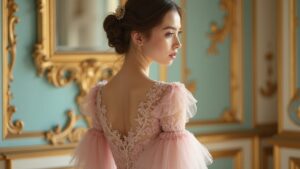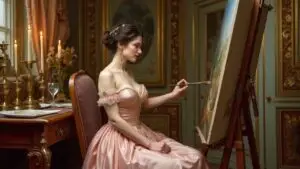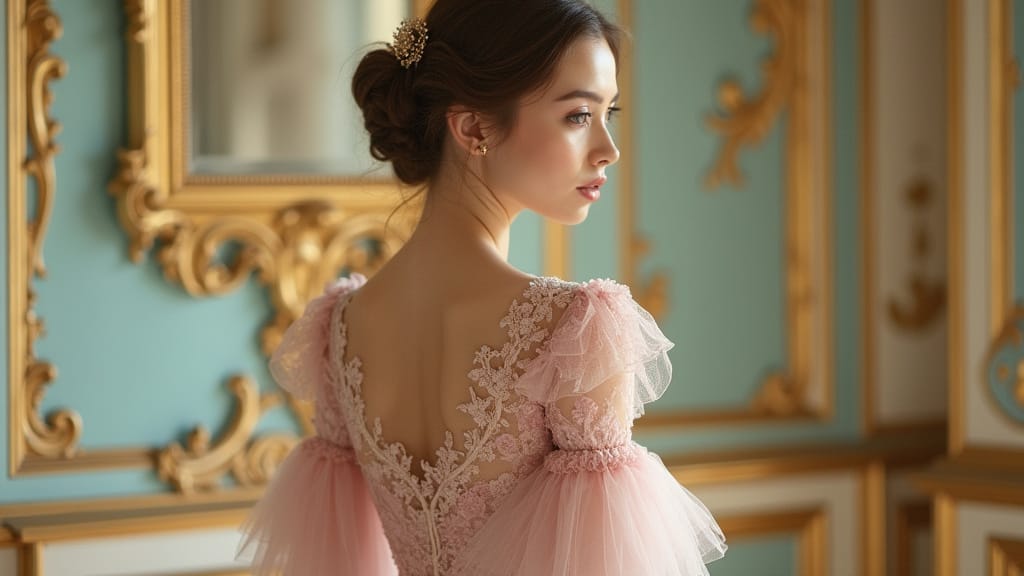If you’ve ever been enchanted by the light, whimsical elegance of an 18th-century painting, you’ve likely encountered Rococo art. With its soft pastel colors, intricate details, and playful scenes, Rococo paintings have a way of pulling you into a world of romantic bliss and aristocratic leisure. But what exactly is Rococo paintings, and what makes it stand out in the art world?
In this guide, we’ll dive deep into the world of Rococo, exploring its origins, key characteristics, and famous artists. Whether you’re a seasoned art lover or someone curious about vintage aesthetics, you’ll walk away with a deeper understanding of this beautiful, often misunderstood, style of painting.
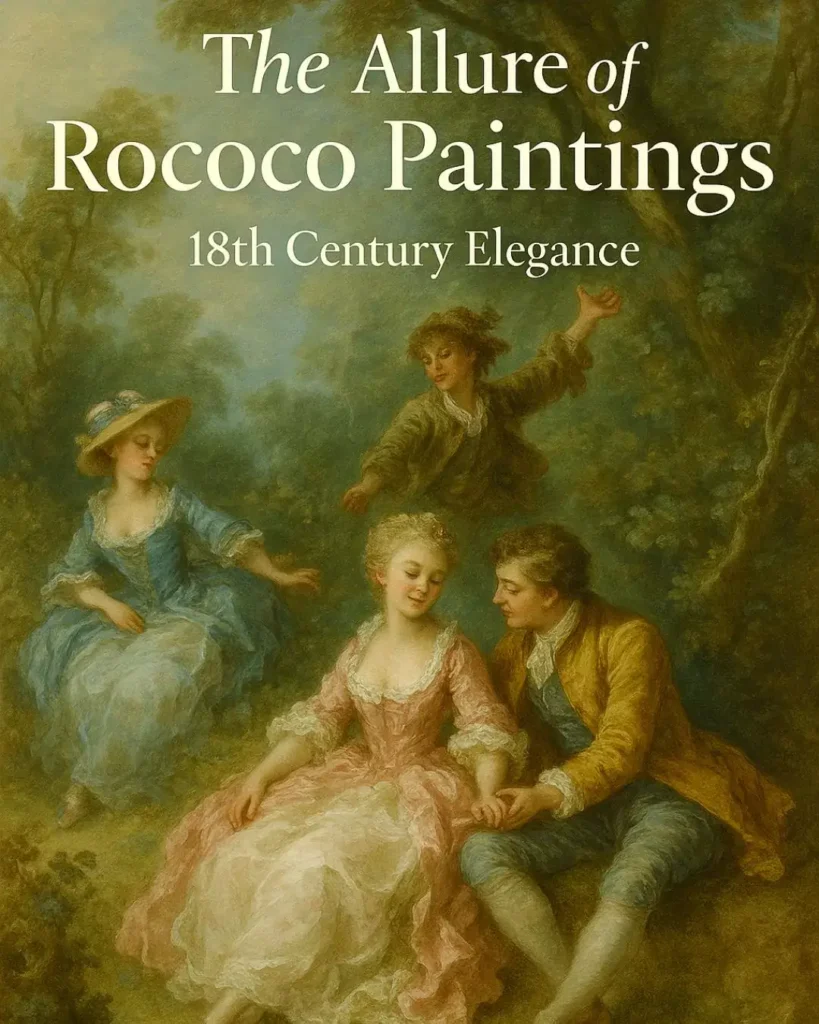
Table of Contents
What is Rococo Paintings?
Rococo paintings is an 18th-century art style that emerged in France as a reaction against the grandeur and seriousness of Baroque art. Unlike the heavy, dramatic tones of Baroque, Rococo introduced a lighter, more playful atmosphere with softer colors, delicate details, and themes of romance and leisure. Think of it as the art equivalent of a spring garden, filled with whimsy, sensuality, and elegance.
Key Characteristics of Rococo Paintings:
- Soft Pastel Colors: Gentle blues, pinks, and creams dominate the canvas, creating a soothing and airy feeling.
- Intricate Detailing: From ornate furniture to lush floral patterns, Rococo paintings are filled with delicate, detailed work.
- Playful and Romantic Themes: Often depicting scenes of flirtation, love, and the carefree lives of the aristocracy.
- Curved, Flowing Lines: Unlike Baroque’s strong, dramatic lines, Rococo is characterized by soft, curved shapes that emphasize elegance and grace.
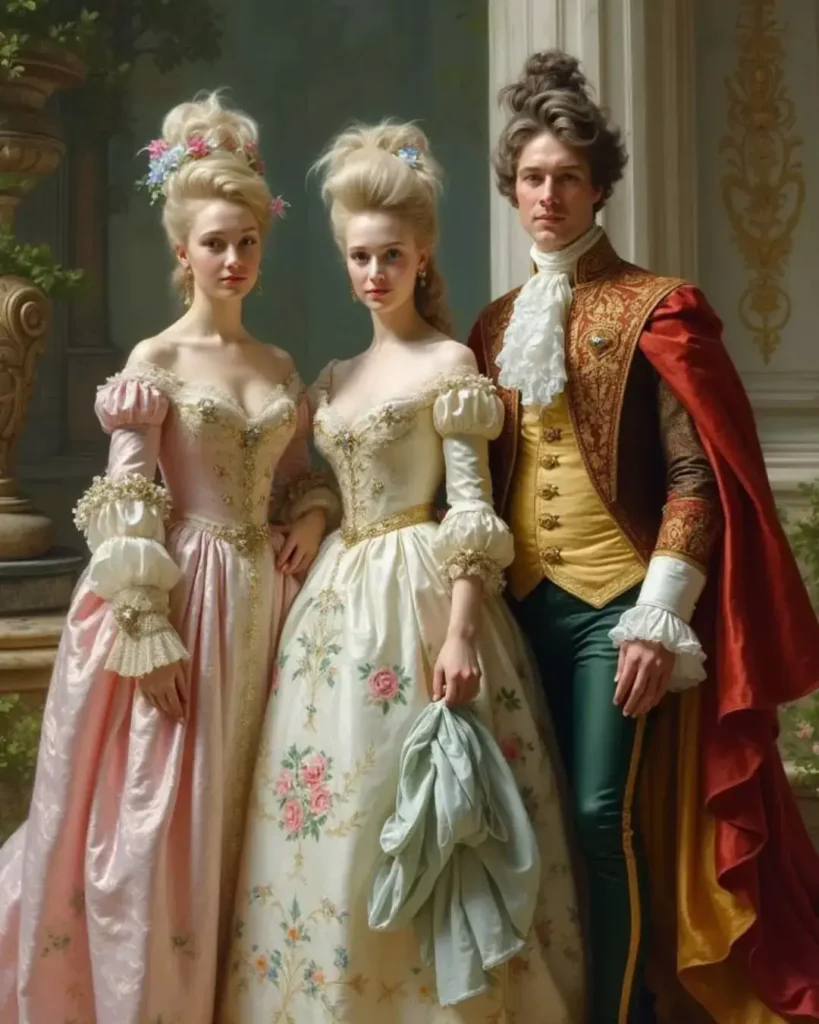
Rococo vs. Baroque: What’s the Difference?
You may be wondering: “Isn’t Rococo just a softer version of Baroque?” Not quite. While the two styles share some similarities, they are distinct in their mood and approach. Here’s how they stack up:
| Feature | Rococo Painting | Baroque Art |
|---|---|---|
| Colors | Soft pastels, light tones | Rich, deep, dramatic colors |
| Themes | Love, flirtation, aristocratic leisure | Religion, power, drama |
| Mood | Light-hearted, playful | Intense, grandiose |
| Composition | Curved, flowing lines | Bold, dramatic, symmetrical |
Rococo is often considered the “lighter” and “more romantic” cousin of Baroque, focusing on the pleasures of life rather than grand spiritual or political statements.
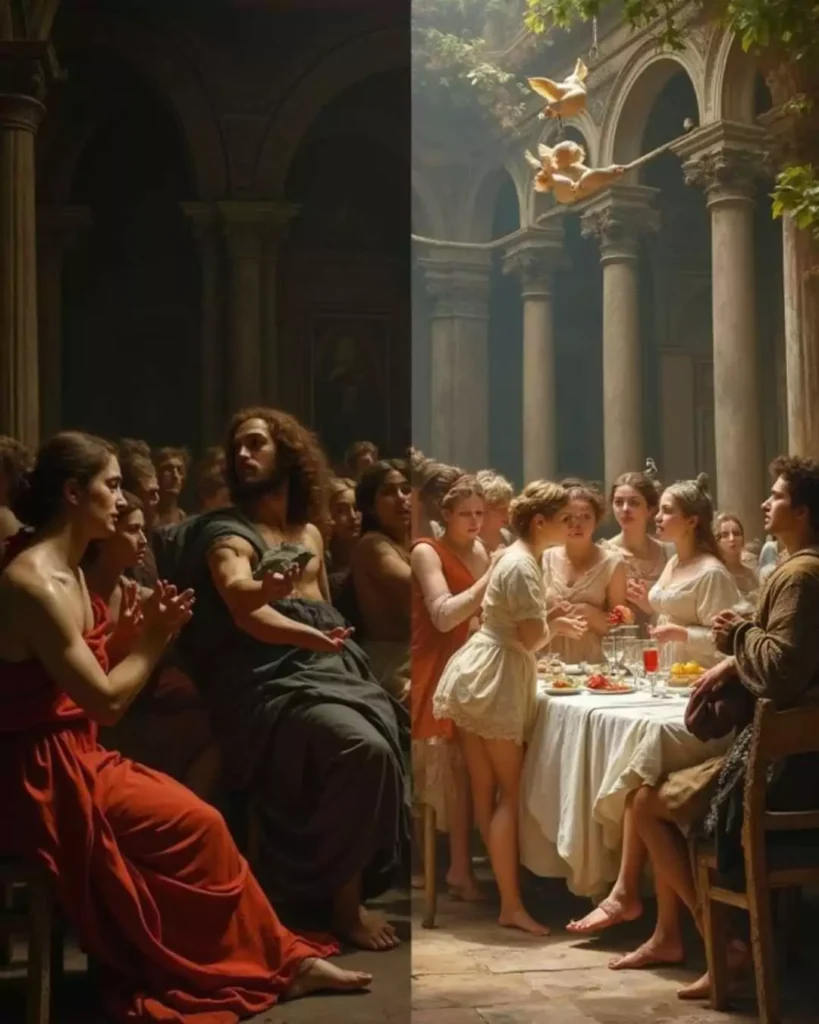
Famous Rococo Artists You Need to Know
If you’re diving into Rococo, you’ll want to familiarize yourself with a few iconic artists who defined this style. These painters captured the light, playful spirit of the era, creating masterpieces that still captivate art lovers today.
Jean-Antoine Watteau
Watteau is often credited with initiating the Rococo style, particularly with his painting Pilgrimage to Cythera. His works typically depict romantic scenes with a sense of grace and elegance, often capturing lovers in idyllic settings. Watteau’s style is delicate, soft, and filled with a sense of fleeting beauty.
François Boucher
Known for his lush, mythological paintings, Boucher was a favorite of the French court, especially Madame de Pompadour, the mistress of King Louis XV. His works, such as The Interrupted Sleep, are full of dreamy, playful imagery that perfectly encapsulates Rococo’s love for sensuality and leisure.
Jean-Honoré Fragonard
Fragonard’s art is perhaps the most quintessential example of Rococo’s flirtatious spirit. His most famous painting, The Swing, portrays a playful, romantic scene that is both sensual and joyful. His use of light, pastel colors and soft brushwork makes his work quintessentially Rococo.
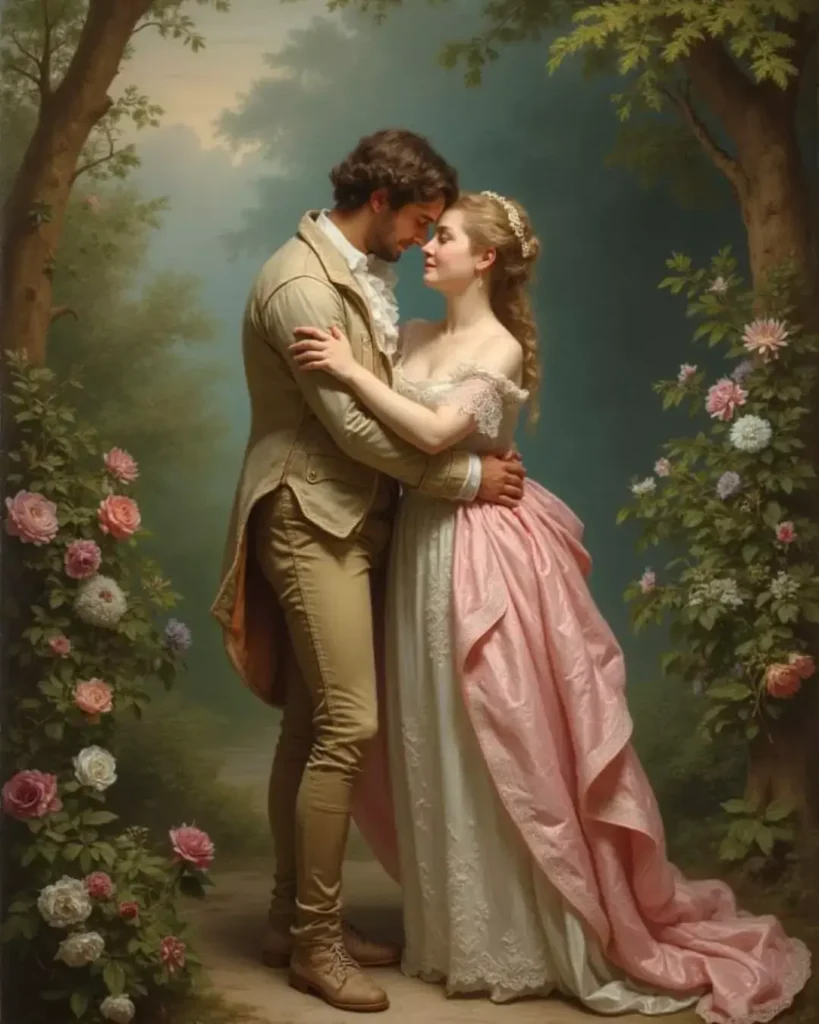
How to Paint in the Rococo Style
If you’re feeling inspired and want to try your hand at Rococo paintings, here are some tips to help you get started:
- Use Soft, Pastel Colors: Think light pinks, soft blues, creams, and pale greens. Avoid dark, moody colors and focus on hues that evoke softness and calm.
- Embrace Curved Lines: Rococo’s emphasis on elegance means you should use flowing, graceful curves rather than sharp angles.
- Add Intricate Details: Fill your artwork with fine details, like lace, floral motifs, and delicate textures. These elements give your painting depth and richness.
- Focus on Romantic Themes: Include playful, lighthearted subjects, like lovers in gardens or mythological scenes. Your paintings should feel full of joy and romance.
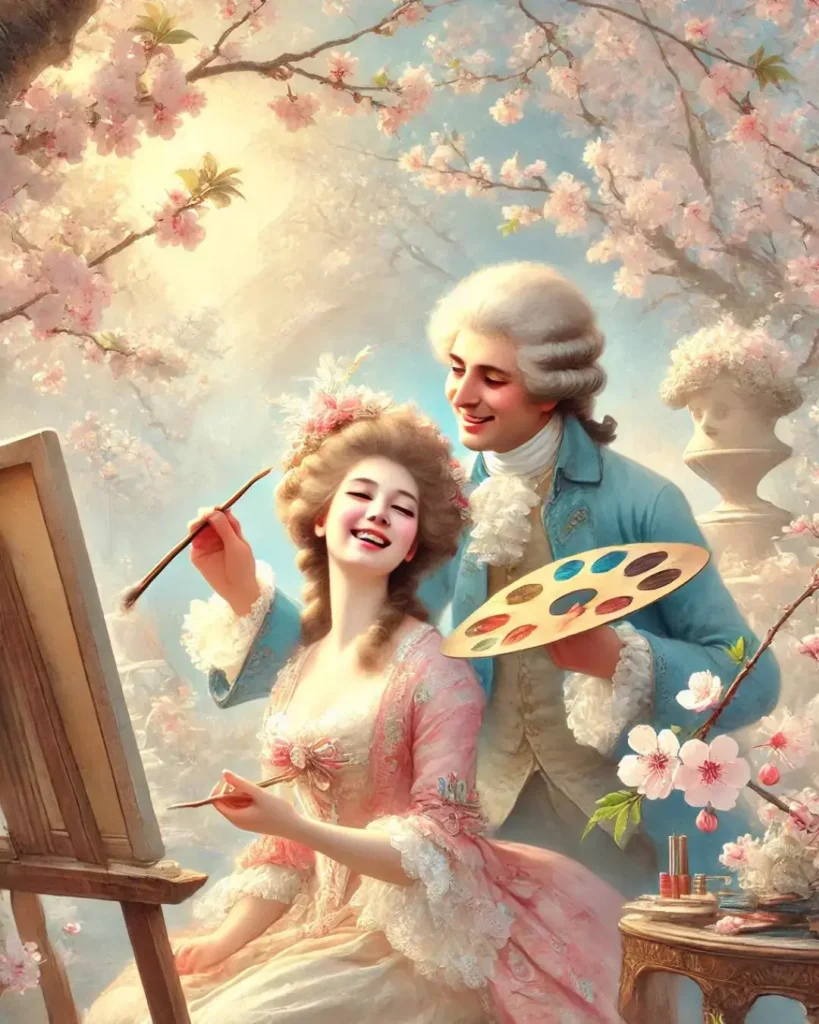
Discover Rococo in a Whole New Way: Color Your Own Masterpiece
Feeling inspired by the elegance and playful spirit of Rococo? Now you don’t have to just admire it—you can experience it firsthand.
Rococo dress to impress invites you to immerse yourself in the charm of 18th-century art through exquisitely designed coloring pages inspired by authentic Rococo works. Whether you’re an artist, a creative hobbyist, or simply someone who loves beautiful things, these pages offer a calming, hands-on way to connect with the pastel elegance and whimsical grace of the Rococo period.
Each page is a celebration of:
- ???? Romantic Scenes & Mythological Whimsy
- ???? Intricate Details Echoing Boucher & Fragonard
- ???? Floral Patterns, Flowing Lines & Aristocratic Opulence
Perfect for relaxing afternoons, creative journaling, or even framing your own finished pieces.
✨ Ready to bring Rococo to life with your own touch of color?
Explore the Collection Now → Rococo Coloring Pages
Don’t just study Rococo—create with it. These coloring pages are more than art—they’re a portal into a romantic world that’s waiting for you to make it your own.
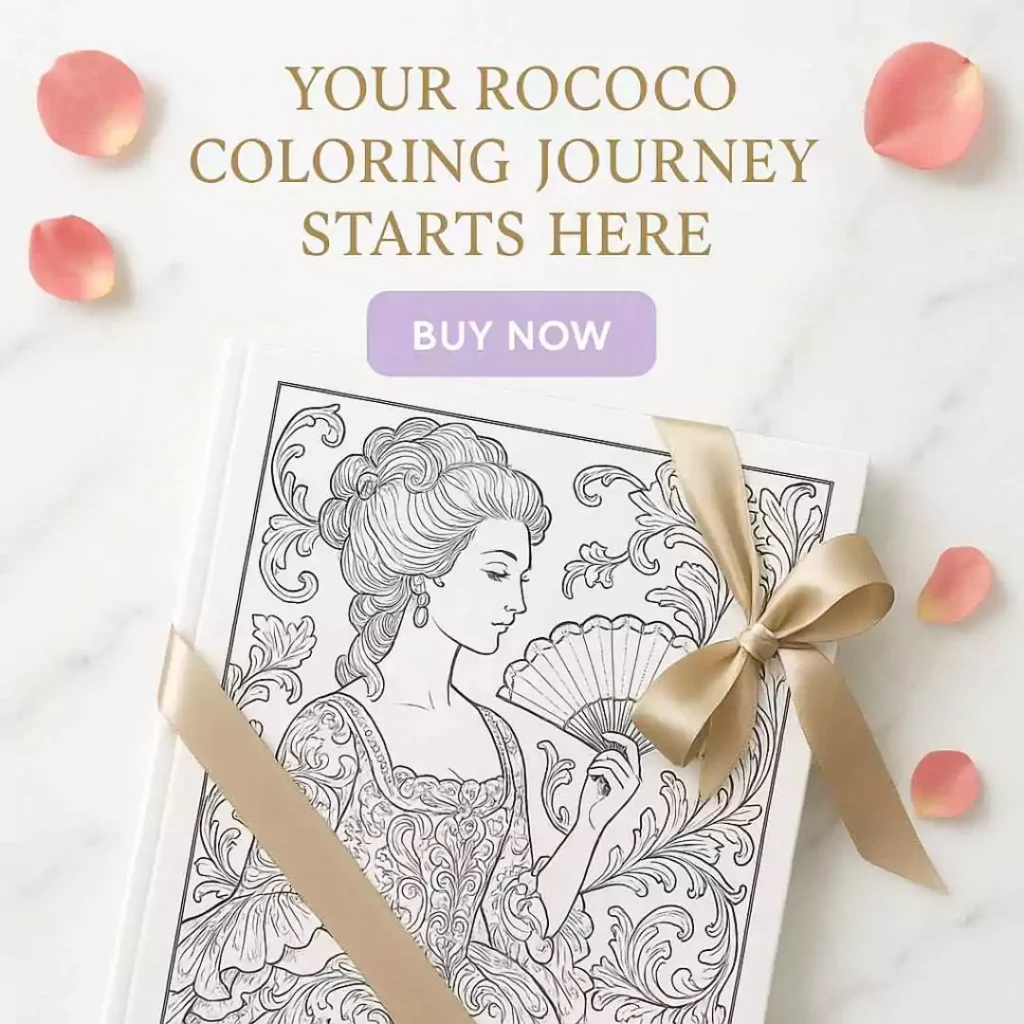
Predominant Themes in Rococo Paintings
At the heart of Rococo art is an exploration of life’s pleasures—often depicted through themes of romance, flirtation, and aristocratic leisure. Common subjects include:
- Romantic Encounters: Lovers in gardens, flirtatious interactions, and soft, intimate moments are frequent themes.
- Mythological Tales: The gods and goddesses of Greek and Roman mythology often make an appearance, but always with a light, playful twist.
- Aristocratic Leisure: Scenes of the French aristocracy enjoying their extravagant lifestyles—playing music, attending parties, and lounging in opulent gardens—are common.
Rococo art portrays an idealized, almost fantastical version of life, where beauty and pleasure reign supreme.
The Influence of Rococo Art
Rococo was more than just a painting style—it also deeply influenced interior design, fashion, and architecture during the 18th century. The ornate furniture, curving architecture, and pastel color schemes that were popular during this period reflect the Rococo aesthetic in every corner of European culture.
However, by the late 18th century, Rococo began to fall out of favor. The rise of Neoclassicism, with its more restrained and moralistic approach, led to a decline in Rococo’s popularity. Still, Rococo’s influence can still be seen in modern design, especially in vintage and shabby chic aesthetics.
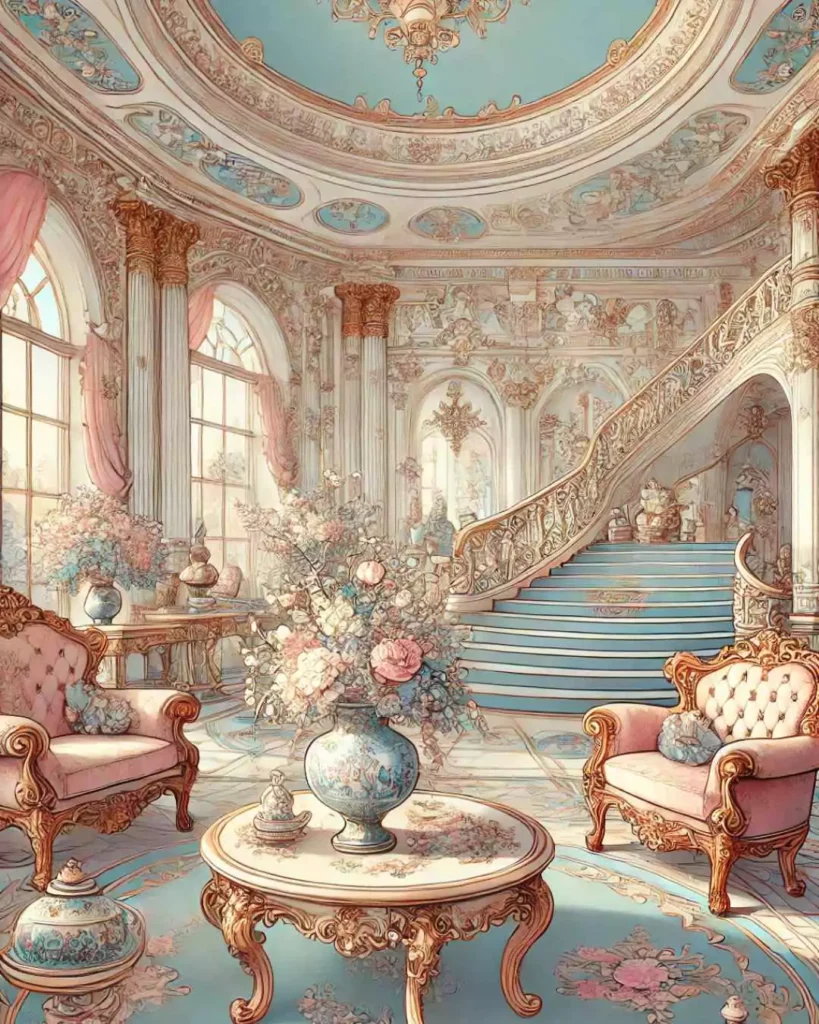
Conclusion: Why Rococo Paintings Still Matter Today
Rococo paintings may have originated in the 18th century, but their whimsical charm and elegant style continue to inspire artists and designers today. Whether you’re decorating your home, appreciating the delicate brushstrokes of a masterwork, or simply fascinated by the world of aristocratic leisure, Rococo offers a captivating glimpse into a time of beauty, romance, and playful indulgence.
So next time you find yourself drawn to a soft pastel palette or an elegant scene of lovers in a garden, remember: you’re not just appreciating a painting—you’re experiencing the enduring magic of Rococo art.
What’s your favorite Rococo paintings? Or are you ready to try creating your own Rococo-inspired masterpiece? Let me know in the comments below!
Subscribe today and get a special gift, just for you!



